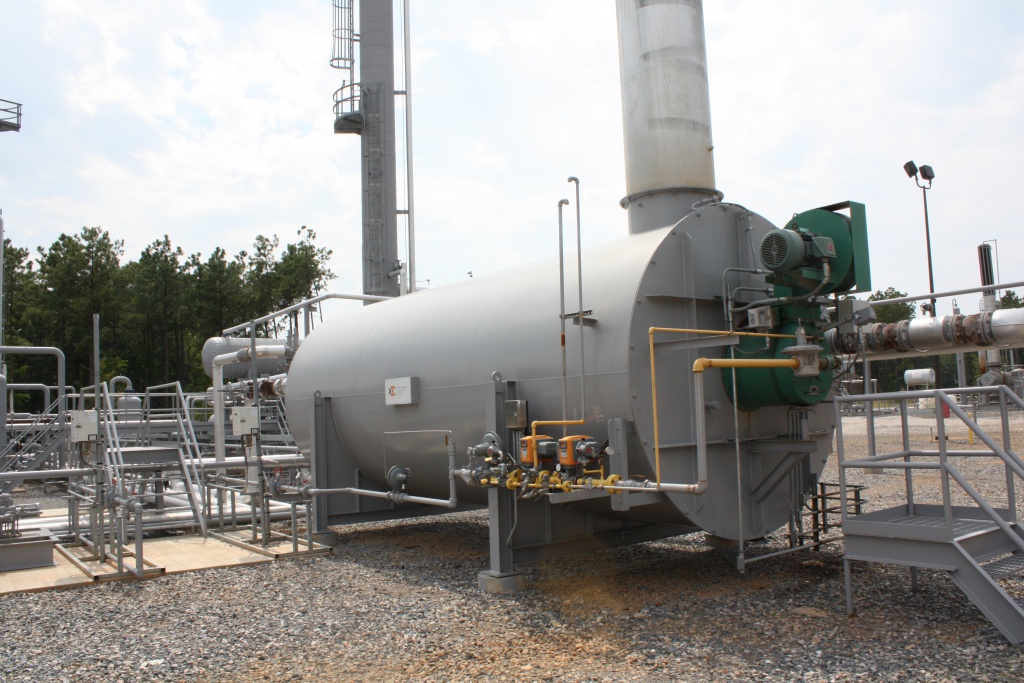Fire Safety and Thermal Fluid Heating Systems
Fire safety is an ever-present concern for operators of thermal oil heating systems. To understand the scope of the problem, let’s review the salient facts.
First and foremost, this is a relatively rare and well-understood threat to users of thermal oil heating systems. Plant owners and operators have been dealing with fire prevention issues for the better part of a century, according to an article in Chemical Processing magazine. So there are a lot of best practices in place to address this specific risk within the industry.
 To discuss the parameters of fire safety in this context, experts rely on three measurements that describe fire phenomena: flash point, fire point, and autoignition temperature. Flash point is the temperature at which vapor from a fluid will temporarily burst into flame (or flash) when exposed to an ignition source. It’s measured by two tests approved by the American Society for Testing and Materials: ASTM D92 and D93. Fire point is the temperature at which such a temporary flame continues to burn the available fuel source. Fire point is typically 40-100°F above the flash point. Both flash point and fire point depend on the presence of an ignition source, such as a spark. Autoignition temperature marks the point at which no ignition source is necessary (as described by ASTM E659-78).
To discuss the parameters of fire safety in this context, experts rely on three measurements that describe fire phenomena: flash point, fire point, and autoignition temperature. Flash point is the temperature at which vapor from a fluid will temporarily burst into flame (or flash) when exposed to an ignition source. It’s measured by two tests approved by the American Society for Testing and Materials: ASTM D92 and D93. Fire point is the temperature at which such a temporary flame continues to burn the available fuel source. Fire point is typically 40-100°F above the flash point. Both flash point and fire point depend on the presence of an ignition source, such as a spark. Autoignition temperature marks the point at which no ignition source is necessary (as described by ASTM E659-78).
While the physical parameters described are important in understanding the fire risk of thermal fluids, they are actually more helpful to scientists in a laboratory than to plant managers and engineers in an actual chemical processing operation. According to the Chemical Processing article, “Relatively few fires have originated in thermal fluid systems.” Rather, the culprit in most cases is not the overheated thermal fluid but the equipment and systems conveying it. Specifically, blame can commonly be placed on poor choice of insulation materials, loss of flow, cracked heater tubes, or uncontained leakage.
What practical advice is there for such hazards? The complete answer is detailed in the article above, and in well-known industry installation guidelines such as FM 7-99, but here are a few highlights:
- Follow an industry accepted and widely used guideline, such as FM 7-99, to guide system design and installation decisions.
- Most good hot oil system manufacturers and hot oil fluid suppliers have published guidelines for installation and design that should be consulted as well.
- “The most effective precaution against insulation fires is the identification of all potential leak points and the specification of high-temperature closed-cell insulation or no insulation at these points.” Open cell insulation, such as fiberglass, will wick oil away from leak points and can potentially saturate hundreds of feet before a problem is seen.
- “To avoid incidents resulting from loss of flow, low-flow shutdown should be included in the burner safety interlock. . . ..”
- Use a low level alarm in your expansion vessel to notify an operator and shut down the system in the event that oil level in the system is falling below normal levels.
- Centralize major equipment and install containment berms in those areas to contain spills and isolate possibly incident locations when possible
- “To prevent excessive thermal cycling of the heater tube bundle, oversized heaters should be derated by the manufacturer.”
- “To prevent leaks, plants should: Allow expansion joints and flexible hoses to move along their axes, never sideways. Maintain lubrication systems for rotary unions and supply these systems with the correct lubricating oils. Install valves with their stems sideways so any leaks run down the stem and away from the piping.”
For more information on fire prevention practices for thermal fluid heating systems, contact one of our knowledgeable representatives or Application Engineers. We’ll be happy to answer your questions.







